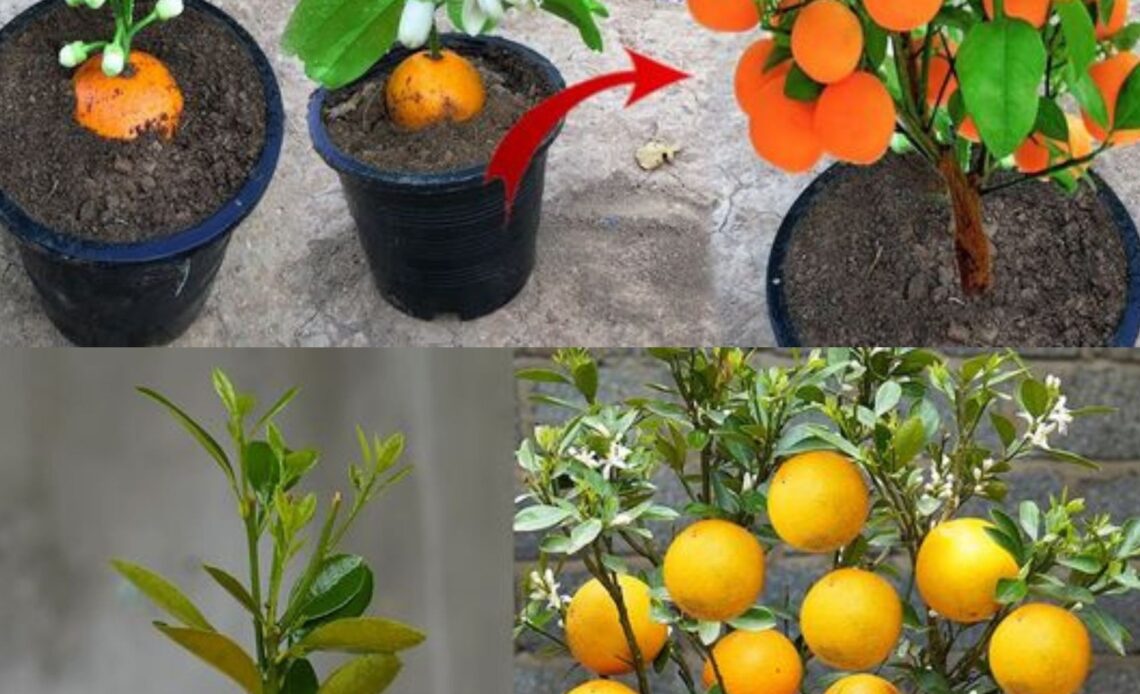
If you’re a fan of citrus fruits like lemons and oranges and dream of having your own fruitful trees, you’re in luck! Propagating lemon and orange plants from cuttings is not only easy but also cost-effective. In this guide, we’ll introduce you to a unique method that allows you to grow these citrus wonders for free.
Materials Needed:
- Healthy lemon or orange tree
- Sharp, clean pruning shears
- Potting soil
- Small pots or containers
- Rooting hormone (optional)
- Plastic bags or clear plastic wrap
- Watering can or spray bottle
Step 1: Selecting and Preparing the Cuttings
- Choose a healthy lemon or orange tree with strong, disease-free branches. Look for branches that are about 6-8 inches long and have several sets of leaves.
- Using sharp pruning shears, cut the selected branches at a 45-degree angle just below a leaf node (where the leaf meets the stem). Aim to make clean cuts to ensure successful propagation.
Step 2: Preparing the Potting Medium
- Fill small pots or containers with well-draining potting soil. Moisten the soil slightly to make it easier for the cuttings to take root.
- If desired, dip the cut end of each citrus cutting into rooting hormone. While this step is optional, it can help speed up the rooting process.
Step 3: Planting the Cuttings
- Make a small hole in the center of the potting soil using your finger or a pencil.
- Gently insert the cut end of each citrus cutting into the hole, making sure at least one set of leaves is above the soil line.
- Press the soil around the cuttings to provide support and ensure good contact between the stems and the soil.
Step 4: Creating a Humid Environment
- Place each pot or container in a plastic bag or cover them with clear plastic wrap. This will help create a humid environment that encourages root growth.
- Make sure the plastic covering is not touching the leaves of the cuttings to prevent moisture buildup and fungal diseases.
Step 5: Providing Care and Maintenance
- Place the pots in a warm, bright location away from direct sunlight. Indirect sunlight or filtered light is ideal for encouraging root development.
- Check the soil moisture regularly and water the cuttings whenever the top inch of soil feels dry. Avoid overwatering, as this can lead to rot.
- Mist the cuttings with water using a spray bottle to keep the foliage hydrated and promote humidity inside the plastic covering.
- After about 4-6 weeks, check for root development by gently tugging on the cuttings. Once roots have formed, you can remove the plastic covering and continue caring for the young citrus plants as usual.
Step 6: Transplanting and Growth
- Once the cuttings have established a healthy root system, you can transplant them into larger pots or directly into the garden.
- Choose a sunny location with well-draining soil for planting your citrus trees. Space them at least 10-15 feet apart to allow for proper growth and air circulation.
- Continue to water, fertilize, and care for your lemon and orange trees as they grow, and soon you’ll be rewarded with delicious, homegrown fruit.
By following this simple yet effective method, you can propagate lemon and orange plants from cuttings for free, allowing you to expand your citrus garden without breaking the bank. Enjoy the satisfaction of growing your own citrus trees and harvesting fresh, juicy fruits right from your backyard!
